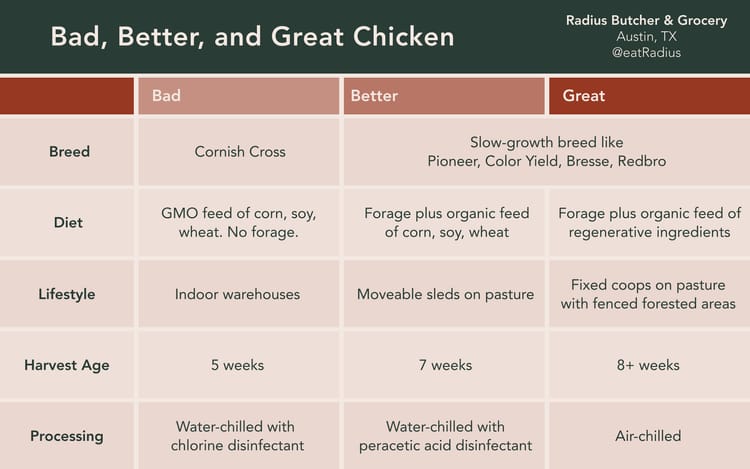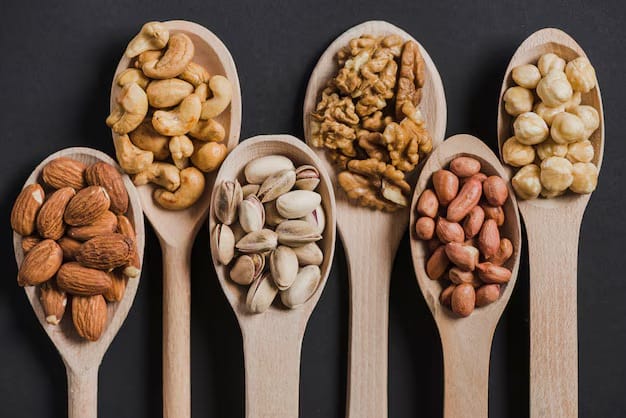
Why are bread, pasta, and other flour products easier to digest in Europe?
It’s a tale as old as time—your gluten avoiding, holistic eating friend heads off to Italy and suddenly her Instagram stories are full of photos of paninis. What gives?
You might imagine that your friend is paying for their wheat spree with bloating and inflammation, but anecdotally it seems that many people have different experiences consuming bread, pastas, and other wheat derived products while in Europe vs within the US.
Is this superstition, a placebo effect, or something deeper?
At Radius we want our daily bread to be as nourishing as possible. So we researched what makes European bread great, and what we can do to find those qualities here at home in Austin, TX.
How European bread is different
The closer we looked, the more differences we found between American and European bread, wheat, and gluten. The vibes might help (who wouldn’t be less inflamed after eating a brioche in a gorgeous piazza or croissant in a leafy park?), but the differences are definitely grounded in science. Here are the factors to consider:
- Wheat varieties and gluten levels: European bakers often use wheat varieties with lower gluten levels that are easier to digest.
- Glyphosate: Glyphosate is banned in many European countries, and unfortunately common in the U.S. at multiple stages of wheat’s lifecycle.
- Additives during harvest, storage, and baking: Like glyphosate, Europe bans many chemical additives that are common in the U.S.
- Fermentation and baking process: Sourdough fermentation and high heat baking are two more factors that make flour products more digestible.
Wheat varieties and gluten levels
Let’s start with the root of the difference between American and European flour and wheat products—the wheat varieties each region is most likely to grow. According to the U.S. Department of Agriculture, this is the breakdown of wheat varieties grown in America and Europe each year:
As you can see, hard red wheat is the high protein variety that’s in most American made wheat products, and high protein means high gluten. In the EU HRW is less commonly used, and rarely grown. Although some areas of Europe have climates that could theoretically support hard red wheat, the region’s farmers prefer to focus on varieties which are better adapted for both their climates and culinary preferences. Instead they rely on lower protein varietals like durum (for pasta and semolina) and soft wheat (for breads and flour), which have lower gluten content than HRW.
These lower levels of gluten can contribute to why some find it easier to digest European wheat based foods. Extra gluten is also frequently added to products in America as a thickening agent, flavorer, or to lend texture, further boosting those levels and making it difficult for people who struggle with gluten absorption to consume wheat products without bloating, inflammation, or other unpleasant symptoms.
Additionally, a study from the Journal of Cereal Science suggests that environment might have a significant impact on the gluten levels of wheat and how likely it is to cause inflammation and other issues suffered by people who struggle with gluten. High temperatures and low precipitation lead to more gluten, two factors more common in U.S. growing regions. But what’s added to the wheat might be just as much to blame for harder to digest bread products.
Glyphosate Use
Glyphosate is an additive used at all stages of the wheat growing and processing journey by American farmers.
The active ingredient in many commercially used herbicides to control weeds, glyphosate, is used by American wheat farmers to control grass weeds at various points throughout the growing process, keeping the crop yields higher.
Glyphosate is also used during the drying and curing process. It’s applied as a pre-harvest treatment to speed up the dry down process and ensure that more wheat can be harvested. A greater yield means a greater profit, and in a time when wheat farmers report shrinking margins as a concern, using these additives can be tempting.
But there might be a good reason to exercise caution with spraying glyphosate. In many parts of Europe glyphosate is either heavily restricted or banned, due to the chemical’s effect on our microbiome, where some believe it may disrupt or even kill gut bacteria. While the FDA has no concerns about glyphosate usage in American farms, as our knowledge of the importance of the gut microbiome for both physical and psychological health grows, many consumers would prefer to avoid it.
A critical review on glyphosate stated that the chemical had been reported to cause increased risk of cancer, endocrine-disruption, celiac disease, autism, effect on erythrocytes, leaky-gut syndrome, and other ailments, and had been reclassified as “probably carcinogenic” under Group 2A by the International Agency for Research on Cancer in 2015.
It’s also been confirmed that the surfactant, polyethoxylated tallow amine (POEA), which is found in the formulations of glyphosate like Roundup, is harmful to both human and ecological health, leading to the evolution of at least 38 resistant weeds. These findings have led to the chemical being either restricted or banned in 20 countries.
Storage Additives
The additive use doesn’t stop once grains are dried and harvested. Many American farmers rely on chemical agents in their processing and storage process, leaning heavily on these two categories:
- Bleaching agents, Benzoyl Peroxide and Chlorine Dioxide: Used to whiten flour and improve its baking properties, and also has some effect on shelf life. Both are banned in Europe due to concerns about the potential toxicity of bleaching agents.
- Maturing agent, Potassium Bromate: Sometimes used to enhance dough strength and elasticity, categorized as “possibly carcinogenic to humans, and has been banned as a food additive in Europe since 1990 due to its potential harms to human health, including carcinogenicity.
There are clearly big differences between American and European wheat even at the flour stage, but the gap grows even larger once we start to bake.
Sugar Additives
The additives involved in American bread production have a major impact on its digestibility, starting with the most common addition: sugar.
Sugar is often added to bread, particularly shelf stable or packaged bread, in America, where it is used to preserve freshness, make bread softer, and add sweetness that many Americans look for in their bread. In fact, many European visitors to America report noticing the overwhelming sweetness of the bread.
This could be an issue because some people have issues digesting sugar. Excessive sugar intake can also disrupt the intestinal barrier, causing gut microbiota dysbiosis and increasing gut permeability. Symptoms of these issues might include bloating and other digestive disruption, so added sugar could definitely be a culprit in why American bread might be harder for some to digest.
More concerning additives
Lastly, many additives that are used to bake bread in America are straight up illegal in Europe. The big bad is the infamous potassium bromate, which has been linked to cancer and is used as a dough strengthener here in America. Unfortunately, it doesn't end there.
Other banned additives used in American bread/flour include titanium dioxide (used to give flour “good flowability”), brominated vegetable oil (a “dough improver and maturing agent”), potassium bromate (an “an oxidizing agent that improves dough”), azodicarbonamide (“a whitening agent in cereal flour and as a dough conditioner in bread baking”), and propylparaben (used in flatbreads and tortillas). While these additives are all FDA approved, their status as banned in Europe makes some consumers cautious about their consumptions, and might give us pause about adding items that use these additives to our shelves.
Baking processes: fermentation
Even if you start with the same raw ingredients, the way you prepare bread dough for baking can have an impact on making it easier or more difficult to digest.
Some studies suggest that baking methods, specifically the use of fermentation, can have an impact on how easily gluten can be digested, while another study shows that sourdough fermentation produces more diversity of organic compounds than bakers yeast does, and that rye bread has a much richer diversity than wheat bread.
These types of naturally fermented breads and non wheat flours are more common in Europe, whereas conventional mainstream American bread uses commercial yeast boosted with sugar for faster rising time and a quicker turnaround.
With less time to develop and draw wild yeast from the air, American bread doughs are less microbially diverse, which might make them more difficult for some people to digest.
What happens in the oven:
The gap between breads continues to grow once the dough goes into the oven. A study on the effect of baking conditions on protein digestibility, mineral and oxalate content of wheat breads found that oxalate concentration is reduced by using higher temperatures. Baking at higher temperatures might actually improve protein digestibility and create more nutritious bread.
While there isn’t much official information available on the typical temperatures used by bakeries in the US vs the EU, the artisan and sourdough breads that are more typical in the EU are baked at temperatures of 500F and higher, whereas American sandwich bread is typically baked at a lower temperature of around 350F. Breads made using traditional wood fired oven baking methods, which are also more common in Europe, are also exposed to higher temperatures.
The Takeaway: how we’re bringing better flour and bread to the table
Radius is all about better for you, better tasting ingredients, so we took the differences between American and European flour, wheat products, and bread very seriously when it came time to stock our shelves. We want wheat products that match the high standards of unadulterated, easier to digest European goods.Our bagged flour is supplied by the wonderful folks at Barton Springs Mill, and our fresh baked goods come from Texas French Bread.
Starting with flour, we believe Barton Springs Mill has a product that's as close as you can get to EU flour in America—maybe even better, in our opinion! BSM uses heirloom grains raised with organic practices and no chemical storing agents. They work directly with all their farmers and mill the flour on site in big stone mills.
When asked why he got into the flour milling game, BSM founder James Brown was jocular. “I wanted a better loaf of bread,” he said.

“I have a culinary degree and was a chef for a while, and was getting really heavily into baking and pizza at home. I started reading about working with whole grains, and sourcing them, and proceeded to make some of the most ridiculously dense bricks you could imagine. So I started looking for help with that, and stumbled onto a blog called The Perfect Loaf. He started talking about finding locally sourced grain at a neighborhood co-op in New Mexico, and thought, ooh, that’s what I’ve gotta do! I started looking for the same opportunities in Texas, and I couldn’t find them.”
Doing more research, James found out that there were a number of small grain millers across the country doing work he admired. “I started ordering from them, and the next thing you know I was heading to a grain gathering in Mount Vernon to learn more about this. I did brief stages, and decided that this is what I wanted to do. I came back, started setting things up, and thought I was going to be working about twenty hours a week. It just kind of went from there. Now we have eleven employees and mill about 25,000 pounds of grain a week. That’s not what I anticipated! We outstripped my five year plan in about eighteen months.”
Thanks to James you can buy BSM flour to bake a better loaf at home, or skip the work and take home an excellent loaf that incorporates his flour. Our fresh baked breads will be supplied by the fine people at Texas French Bread, which, as the name implies, blend the highest standards of European baking techniques with a commitment to using the finest locally sourced flour. Their bread is made from a blend of Barton Springs Mill and Central Milling organic flour, and since 1981, they’ve been creating breads without any of the suspicious additives, high sugar, or other concerning ingredients and processes that make American breads so difficult to digest.

We’re truly committed to making your daily bread better. By partnering with these dedicated suppliers, we’re able to deliver bread that’s easier to digest—and tastes pretty dang fabulous, too.
Summary
The differences between European and American flour products summed up in one table.



